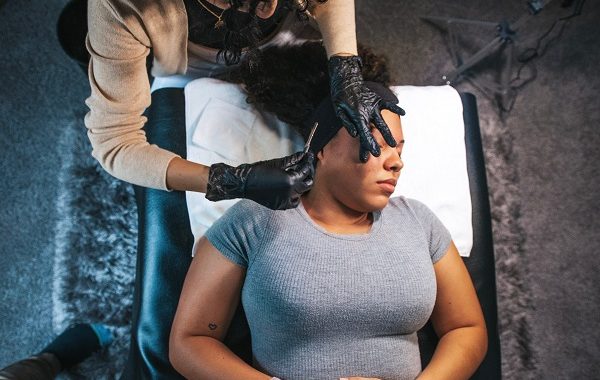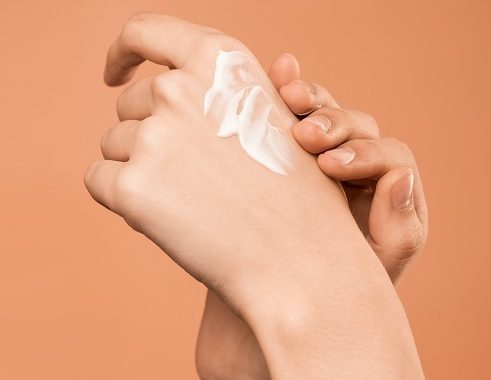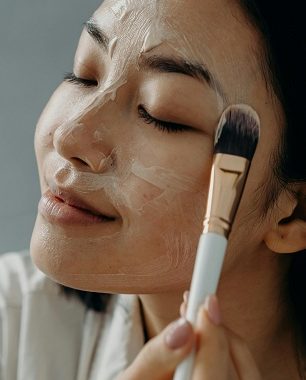
Dermaplaning is a cosmetic procedure that involves using a sterile surgical scalpel to gently shave the surface of the skin, removing the outermost layer of dead skin cells and fine vellus hair, commonly known as peach fuzz. While dermaplaning is generally considered safe when performed by a trained and experienced professional, like any cosmetic procedure, it may have potential side effects. It’s important to note that individual experiences may vary, and some people may not experience any side effects at all. Here are some common dermaplaning side effects.
Common dermaplaning side effects:
-
Redness and Irritation:
- Description: After dermaplaning, it is common for the treated area to appear slightly red and irritated. This is a normal reaction as the outer layer of the skin has been removed.
- Duration: Redness typically subsides within a few hours to a day.
-
Sensitivity:
- Description: The skin may feel more sensitive than usual following dermaplaning. This is because the protective barrier of dead skin cells has been temporarily removed.
- Duration: Increased sensitivity usually diminishes within a day or two.
-
Dryness:
- Description: Dermaplaning can lead to temporary dryness, especially if the skin was already prone to dryness or dehydration.
- Duration: Dryness may persist for a few days until the skin’s natural moisture balance is restored.
-
Bruising:
- Description: In some cases, individuals may experience bruising, particularly if the dermaplaning tool is applied with excessive pressure.
- Duration: Bruising, if present, typically resolves within a week.
-
Ingrown Hairs:
- Description: Although dermaplaning aims to remove peach fuzz, there is a slight risk of the hair follicles becoming irritated, leading to ingrown hairs.
- Duration: Ingrown hairs may occur in the days following the procedure but can often be managed with proper skincare.
-
Infection:
- Description: If proper hygiene and sterile techniques are not followed during the dermaplaning procedure, there is a risk of bacterial infection.
- Prevention: To minimize the risk of infection, it is crucial to choose a qualified and experienced professional and ensure that all equipment is sterile.
-
Hyperpigmentation or Hypopigmentation:
- Description: In rare cases, dermaplaning may cause changes in skin pigmentation. This can result in either darkening (hyperpigmentation) or lightening (hypopigmentation) of the skin.
- Risk factors: Individuals with darker skin tones may be more prone to hyperpigmentation.
-
Scarring:
- Description: Although uncommon, there is a minimal risk of scarring, especially if the procedure is performed aggressively or on sensitive skin.
- Prevention: Choosing a qualified and skilled practitioner can help minimize the risk of scarring.
It is essential to follow post-treatment care instructions provided by the skincare professional to reduce the likelihood of side effects and promote optimal healing. Individuals considering dermaplaning should consult with a qualified skincare professional to discuss their skin type, potential risks, and expected outcomes before undergoing the procedure.
Dermaplaning side effects on face
Dermaplaning is a cosmetic procedure that involves the use of a sterile surgical scalpel to exfoliate the outer layer of the skin, removing dead skin cells and fine facial hair. While it is generally considered a safe procedure when performed by a trained and experienced professional, there are potential side effects that individuals should be aware of. It’s important to note that the severity and occurrence of side effects can vary from person to person. Here’s a detailed look at some potential dermaplaning side effects on the face:
-
Redness and Irritation:
- Description: It is common for the face to appear slightly red immediately after dermaplaning. The process involves scraping off the top layer of the skin, leading to increased blood flow and temporary irritation.
- Duration: Redness typically subsides within a few hours, but it may persist for up to a day for some individuals.
-
Sensitivity:
- Description: Dermaplaning can leave the skin more sensitive than usual. The removal of the outer layer temporarily exposes the underlying, more delicate skin.
- Duration: Increased sensitivity usually resolves within a day or two.
-
Dryness:
- Description: The exfoliation process may temporarily strip away the skin’s natural oils, leading to dryness.
- Duration: Dryness can last for a few days until the skin replenishes its moisture levels.
-
Bruising:
- Description: In some cases, individuals may experience bruising, particularly if the dermaplaning tool is applied with excessive pressure.
- Duration: Bruising, if present, typically fades within a week.
-
Ingrown Hairs:
- Description: While dermaplaning aims to remove peach fuzz and prevent ingrown hairs, there is a slight risk of irritation leading to ingrown hairs.
- Duration: Ingrown hairs, if they occur, can be managed with proper skincare and typically resolve in the days following the procedure.
-
Infection:
- Description: If sterile techniques are not followed during the procedure, there is a risk of bacterial infection.
- Prevention: It is crucial to choose a qualified professional, ensure sterile equipment, and follow proper post-treatment care to minimize the risk of infection.
-
Hyperpigmentation or Hypopigmentation:
- Description: Rarely, dermaplaning may lead to changes in skin pigmentation, resulting in either darkening (hyperpigmentation) or lightening (hypopigmentation) of the skin.
- Risk factors: Individuals with darker skin tones may be more prone to hyperpigmentation.
-
Scarring:
- Description: While uncommon, there is a minimal risk of scarring, especially if the procedure is performed too aggressively or on sensitive skin.
- Prevention: Choosing a qualified and skilled practitioner can help minimize the risk of scarring.
It’s crucial to consult with a skincare professional before undergoing dermaplaning to discuss individual skin concerns, assess potential risks, and determine if the procedure is suitable. Following post-treatment care instructions and avoiding sun exposure can also contribute to a smoother recovery process.
Dermaplaning side effects long term
Dermaplaning is generally considered a safe and low-risk cosmetic procedure when performed by a trained and experienced professional. However, there is limited information available on the long-term effects of dermaplaning, as research studies on this specific aspect are not extensive. As of my knowledge cutoff in January 2022, here’s an overview of potential considerations regarding dermaplaning side effects over the long term:
-
Increased Sensitivity:
- Description: Dermaplaning involves the removal of the outer layer of skin, which can leave the skin temporarily more sensitive. Over time, some individuals may find that their skin becomes more sensitive to certain skincare products or environmental factors.
- Long-Term Impact: With proper skincare and sun protection, increased sensitivity is often a short-term concern that resolves within a few days. However, prolonged or repeated dermaplaning without adequate skincare may contribute to persistent sensitivity.
-
Changes in Pigmentation:
- Description: In rare cases, dermaplaning can lead to changes in skin pigmentation, including hyperpigmentation (darkening) or hypopigmentation (lightening).
- Long-Term Impact: While most pigmentation changes are temporary and resolve with time, it’s crucial to use sun protection to minimize the risk of long-term pigmentation issues. Individuals with darker skin tones may be more susceptible to hyperpigmentation.
-
Risk of Scarring:
- Description: While uncommon, there is a minimal risk of scarring associated with dermaplaning, especially if the procedure is performed too aggressively or on sensitive skin.
- Long-Term Impact: Scarring, if it occurs, can have long-term effects on the skin’s appearance. It underscores the importance of choosing a qualified practitioner who follows proper techniques and guidelines.
-
Hair Regrowth and Texture:
- Description: Dermaplaning removes fine vellus hair (peach fuzz), but the hair does grow back. Some individuals may wonder if frequent dermaplaning affects the texture or growth pattern of facial hair over the long term.
- Long-Term Impact: The regrowth of facial hair after dermaplaning is typically the same texture and color as before the procedure. Frequent dermaplaning is not known to change the growth pattern or type of hair that regrows.
-
Collagen Stimulation:
- Description: Some proponents of dermaplaning suggest that the procedure can stimulate collagen production and improve skin texture over time.
- Long-Term Impact: While dermaplaning does promote exfoliation and may contribute to improved skin texture, more research is needed to establish its long-term impact on collagen stimulation compared to other skincare interventions.
It’s essential for individuals considering dermaplaning to consult with a qualified skincare professional who can assess their specific skin type, concerns, and suitability for the procedure. Additionally, adherence to post-treatment care, including sun protection and proper skincare, can contribute to a positive long-term outcome. As with any cosmetic procedure, individual experiences may vary, and long-term effects may depend on factors such as skin type, age, and overall skincare practices.
Peach fuzz dermaplaning side effects
Peach fuzz dermaplaning, or simply dermaplaning, is a cosmetic procedure that involves using a sterile surgical scalpel to gently shave the surface of the skin, removing the fine vellus hair (commonly known as peach fuzz) along with dead skin cells. While dermaplaning is generally considered a safe and well-tolerated procedure, there are potential side effects associated with the removal of peach fuzz. Here’s a detailed look at peach fuzz dermaplaning side effects:
-
Redness and Irritation:
- Description: Dermaplaning involves physical exfoliation, which can cause temporary redness and irritation. The removal of peach fuzz and the outer layer of skin may lead to increased blood flow and sensitivity.
- Duration: Redness and irritation are typically short-lived, resolving within a few hours to a day.
-
Sensitivity:
- Description: The process of dermaplaning exposes the underlying, more sensitive skin as it removes the protective layer of dead skin cells and peach fuzz.
- Duration: Increased sensitivity is common immediately after the procedure but usually subsides within a day or two.
-
Dryness:
- Description: Dermaplaning can temporarily strip away the skin’s natural oils, leading to dryness.
- Duration: Dryness may last for a few days until the skin replenishes its moisture levels.
-
Bruising:
- Description: In some cases, individuals may experience bruising, especially if the dermaplaning tool is applied with excessive pressure.
- Duration: Bruising, if present, typically fades within a week.
-
Ingrown Hairs:
- Description: While dermaplaning aims to remove peach fuzz and prevent ingrown hairs, there is a slight risk of irritation leading to ingrown hairs.
- Duration: Ingrown hairs, if they occur, can be managed with proper skincare and typically resolve in the days following the procedure.
-
Infection:
- Description: If sterile techniques are not followed during the procedure, there is a risk of bacterial infection.
- Prevention: Choosing a qualified professional and ensuring that all equipment is sterile can minimize the risk of infection.
-
Changes in Pigmentation:
- Description: Dermaplaning may lead to temporary changes in skin pigmentation, including hyperpigmentation or hypopigmentation.
- Duration: Pigmentation changes, if they occur, are usually temporary and fade over time. Sun protection is crucial to prevent long-term pigmentation issues.
-
Risk of Scarring:
- Description: While uncommon, there is a minimal risk of scarring, especially if the procedure is performed too aggressively or on sensitive skin.
- Prevention: Choosing a qualified and skilled practitioner can help minimize the risk of scarring.
It’s important for individuals considering peach fuzz dermaplaning to consult with a qualified skincare professional to discuss their specific skin concerns, assess potential risks, and determine if the procedure is suitable for them. Following post-treatment care instructions, including the use of sunscreen and gentle skincare products, can contribute to a smoother recovery process and minimize the risk of side effects.
Dermaplaning hair regrowth
Dermaplaning is a cosmetic procedure that involves using a sterile surgical scalpel to remove the fine vellus hair, commonly known as peach fuzz, along with the outer layer of dead skin cells. One common concern individuals have about dermaplaning is how the hair regrows after the procedure. Here are some details about dermaplaning hair regrowth:
-
Hair Texture and Color:
- Description: Dermaplaning does not change the texture or color of the regrown hair. The vellus hair that is removed is typically fine and light-colored, and when it grows back, it tends to have the same characteristics.
- Regrowth Time: Hair regrowth can vary, but it generally occurs within a few weeks after the procedure.
-
No Stimulus for Thicker Hair Growth:
- Description: Contrary to a common myth, dermaplaning does not stimulate thicker or darker hair growth. The procedure only removes the hair that is present on the surface of the skin, and it doesn’t affect the hair follicles or alter the growth pattern.
- Mechanism: Dermaplaning targets the superficial layer of the skin, not the hair follicles’ deeper structures. As a result, it doesn’t influence the thickness or color of the hair that regrows.
-
Maintenance Required:
- Description: Since dermaplaning only provides temporary hair removal, maintenance sessions are necessary to keep the skin smooth and hair-free.
- Frequency: The frequency of dermaplaning sessions varies among individuals. Some people may choose to have the procedure done monthly, while others may opt for less frequent sessions.
-
Preventing Ingrown Hairs:
- Description: Dermaplaning can help reduce the occurrence of ingrown hairs, as it removes the layer of dead skin cells that can contribute to hair follicle blockages.
- Exfoliation Effect: The exfoliating nature of dermaplaning can help keep the skin’s surface smoother, minimizing the likelihood of ingrown hairs.
-
Hair Growth Patterns:
- Description: Dermaplaning does not alter the natural growth pattern of hair. The hair will regrow according to its pre-existing pattern.
- Consistency: Individuals can expect their hair to regrow in the same direction and pattern as before the dermaplaning procedure.
-
Individual Variability:
- Description: The rate of hair regrowth can vary from person to person. Factors such as genetics, hormonal changes, and age can influence the speed and thickness of hair regrowth.
- Personal Experience: Some individuals may notice slower regrowth, while others may observe that their hair regrows relatively quickly.
It’s important to note that dermaplaning primarily targets the removal of superficial hair and dead skin cells for aesthetic purposes. While it is an effective method for achieving smoother skin temporarily, it does not provide a permanent solution for hair removal. Individuals considering dermaplaning should consult with a qualified skincare professional to discuss their specific needs, concerns, and expectations regarding hair regrowth after the procedure.
Dermaplaning at home
Dermaplaning, a cosmetic procedure that involves using a sterile scalpel to exfoliate the skin and remove fine vellus hair (peach fuzz), is typically performed by trained professionals in a clinical setting. However, some individuals choose to attempt dermaplaning at home using DIY tools or dermaplaning devices. It’s important to note that performing dermaplaning at home carries certain risks and requires careful consideration. Here are some details about dermaplaning at home:
-
Risks and Safety Concerns:
- Professional Training: Licensed aestheticians and skincare professionals are trained to perform dermaplaning safely. Doing it at home increases the risk of injury, including nicks, cuts, and infections.
- Sterilization: Ensuring the sterility of the tools used is crucial to prevent infections. Improper sterilization can lead to bacterial contamination and skin issues.
-
Tools and Devices:
- Dermaplaning Blades: Some at-home dermaplaning kits come with single-use blades similar to those used in professional settings. These blades are designed to be disposed of after a single use.
- Dermaplaning Devices: Electric dermaplaning devices are available for home use. These often come with safety features, such as a guarded blade, to minimize the risk of injury.
-
Preparation and Technique:
- Clean Skin: Before dermaplaning, it’s essential to cleanse the skin thoroughly to remove any makeup, oil, or debris.
- Technique: Individuals attempting dermaplaning at home should follow proper technique, including holding the skin taut and using gentle, short strokes. The blade should be held at a 45-degree angle to the skin.
-
Post-Treatment Care:
- Moisturization: After dermaplaning, it’s crucial to apply a gentle, hydrating moisturizer to soothe the skin.
- Sun Protection: Sunscreen is essential to protect the newly exposed skin from harmful UV rays. Sunscreen with at least SPF 30 is recommended.
-
Frequency of Home Dermaplaning:
- Frequency: Professionals typically recommend spacing out dermaplaning sessions to allow the skin to recover. The frequency can vary, but monthly sessions are common.
- Overdoing It: Performing dermaplaning too frequently at home can increase the risk of irritation, redness, and other side effects.
-
Consulting a Professional:
- Initial Guidance: Individuals considering dermaplaning at home should consult with a skincare professional initially. Professionals can provide guidance on technique, safety, and appropriate tools.
- Monitoring Skin Reaction: Regularly monitoring the skin’s reaction to at-home dermaplaning is important. If there are signs of persistent redness, irritation, or other adverse reactions, it’s advisable to discontinue the procedure and seek professional advice.
-
Contraindications:
- Skin Conditions: People with certain skin conditions, such as active acne, eczema, or rosacea, may not be suitable candidates for dermaplaning, especially when done at home.
- Medical Consultation: Individuals with existing skin concerns or medical conditions should consult a dermatologist or skincare professional before attempting dermaplaning at home.
While dermaplaning at home is possible, it is essential to approach it with caution, follow proper guidelines, and prioritize safety. The procedure is generally safer when performed by a trained professional in a controlled environment. Individuals who are uncertain about performing dermaplaning at home may benefit from seeking professional services to minimize the risk of complications.
Dermaplaning regret
Dermaplaning is a cosmetic procedure that involves the use of a sterile surgical scalpel to scrape off the outer layer of dead skin cells and fine vellus hair (peach fuzz). While many people have positive experiences with dermaplaning and appreciate the smooth and exfoliated skin it can provide, there are instances where individuals may experience regret or dissatisfaction with the procedure. Here are some details about dermaplaning regret:
-
Uneven Results:
- Description: Despite the intended goal of achieving smoother skin, there may be instances where the results are uneven. This could be due to variations in pressure applied during the procedure or uneven strokes.
- Regret: Individuals might regret dermaplaning if the outcome does not meet their expectations or if they notice unevenness in the skin texture.
-
Post-Procedure Redness and Sensitivity:
- Description: It’s common for the skin to be red and sensitive immediately after dermaplaning. While this typically subsides within a day or so, some individuals may experience prolonged redness or increased sensitivity.
- Regret: Those who experience extended redness or heightened sensitivity may regret undergoing the procedure, especially if they were not adequately informed about potential side effects.
-
Unexpected Side Effects:
- Description: While dermaplaning is generally considered safe, there can be unexpected side effects such as bruising, temporary hyperpigmentation or hypopigmentation, and, rarely, infection.
- Regret: Individuals who experience unexpected side effects may feel regret about the decision to undergo dermaplaning, especially if they were not aware of the potential risks or if the side effects are more severe than anticipated.
-
Hair Regrowth Concerns:
- Description: Some individuals may not be satisfied with the regrowth of peach fuzz after dermaplaning. While the hair grows back, it may not meet the expectations of those who were hoping for a more permanent solution.
- Regret: If individuals were expecting longer-lasting results or if they are dissatisfied with the regrowth of fine facial hair, they may experience regret about choosing dermaplaning.
-
Skin Reaction to Products:
- Description: Following dermaplaning, the skin may be more receptive to skincare products. However, if individuals experience irritation or breakouts due to product application post-procedure, they may regret undergoing dermaplaning.
- Regret: Unwanted reactions to skincare products may lead to regret, especially if individuals were hoping for improved product absorption and skin health.
-
Personal Discomfort:
- Description: Some individuals may find the dermaplaning process uncomfortable or anxiety-inducing, especially if they are sensitive to the sensation of the scalpel on the skin.
- Regret: Discomfort during the procedure or feelings of anxiety may contribute to regret, particularly if the individual was not prepared for or comfortable with the sensations associated with dermaplaning.
It’s important to note that experiences with dermaplaning can vary widely, and while some individuals may regret the procedure, others may be satisfied with the results. To minimize the likelihood of regret, individuals should have realistic expectations, thoroughly discuss the procedure with a qualified skincare professional, and carefully consider any potential risks or side effects. If regret arises, seeking the guidance of a skincare professional to address concerns or explore potential solutions is recommended.
Further Reading:
What Is Dermaplaning? The Results, Side Effects, and Cost
Dermaplaning side effects what to know
FAQs:
Are there any negative effects to dermaplaning?
Dermaplaning, a cosmetic procedure using a surgical scalpel to exfoliate skin and remove peach fuzz, may lead to temporary redness, sensitivity, and dryness. Potential negative effects include bruising, the risk of ingrown hairs, infection if sterile techniques are not followed, and rare instances of pigment changes or scarring. While these side effects are generally mild and temporary, consulting with a qualified skincare professional is essential to minimize risks and ensure proper post-treatment care.
Do dermatologists recommend dermaplaning?
Dermatologists may have mixed opinions on dermaplaning. While some acknowledge its benefits for exfoliation and smoother skin, others express concerns about potential side effects, especially if performed incorrectly. Dermatologists may recommend alternatives with proven efficacy and lower risks, such as chemical peels or microdermabrasion. Individual skin types and concerns play a role in whether a dermatologist recommends dermaplaning, and it’s advisable to consult with a skincare professional for personalized advice.
What happens if you stop dermaplaning?
If you stop dermaplaning, your skin will naturally return to its usual state. The removed peach fuzz will grow back, and the exfoliation benefits will diminish over time. While discontinuing dermaplaning won’t have adverse effects, consistent sessions are often needed for maintained results. Skincare routines and alternative treatments may be recommended to sustain skin health and address specific concerns.
What happens when hair grows back after dermaplaning?
After dermaplaning, the fine vellus hair (peach fuzz) will gradually regrow. The regrowth is typically soft and doesn’t alter in color or thickness. The new hair may become noticeable again several weeks after the procedure. Dermaplaning does not change the natural growth pattern of hair, and subsequent sessions are often required for sustained smoothness. Regular skincare practices, including sunscreen use, can optimize the appearance of regrown hair after dermaplaning.
What changes can one expect in their skin before and after dermaplaning?
Before dermaplaning, the skin may have a dull appearance with peach fuzz and accumulated dead skin cells. After dermaplaning, the skin typically exhibits improved smoothness, brightness, and a reduction in peach fuzz. The procedure enhances product absorption and may lead to a more radiant complexion. However, individual results may vary, and adherence to post-treatment care is crucial for optimal outcomes.
Can you find dermaplaning regrowth pictures online, and what do they typically show?
Yes, you can find dermaplaning regrowth pictures online, showcasing the gradual return of fine vellus hair after the procedure. These images often demonstrate the soft and light texture of regrown hair, emphasizing that dermaplaning does not alter the thickness or color of hair. Individual experiences with regrowth may vary, and these pictures serve as visual references for those considering or curious about the effects of dermaplaning over time.


